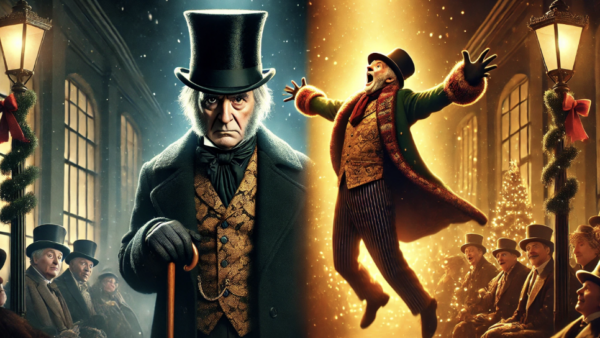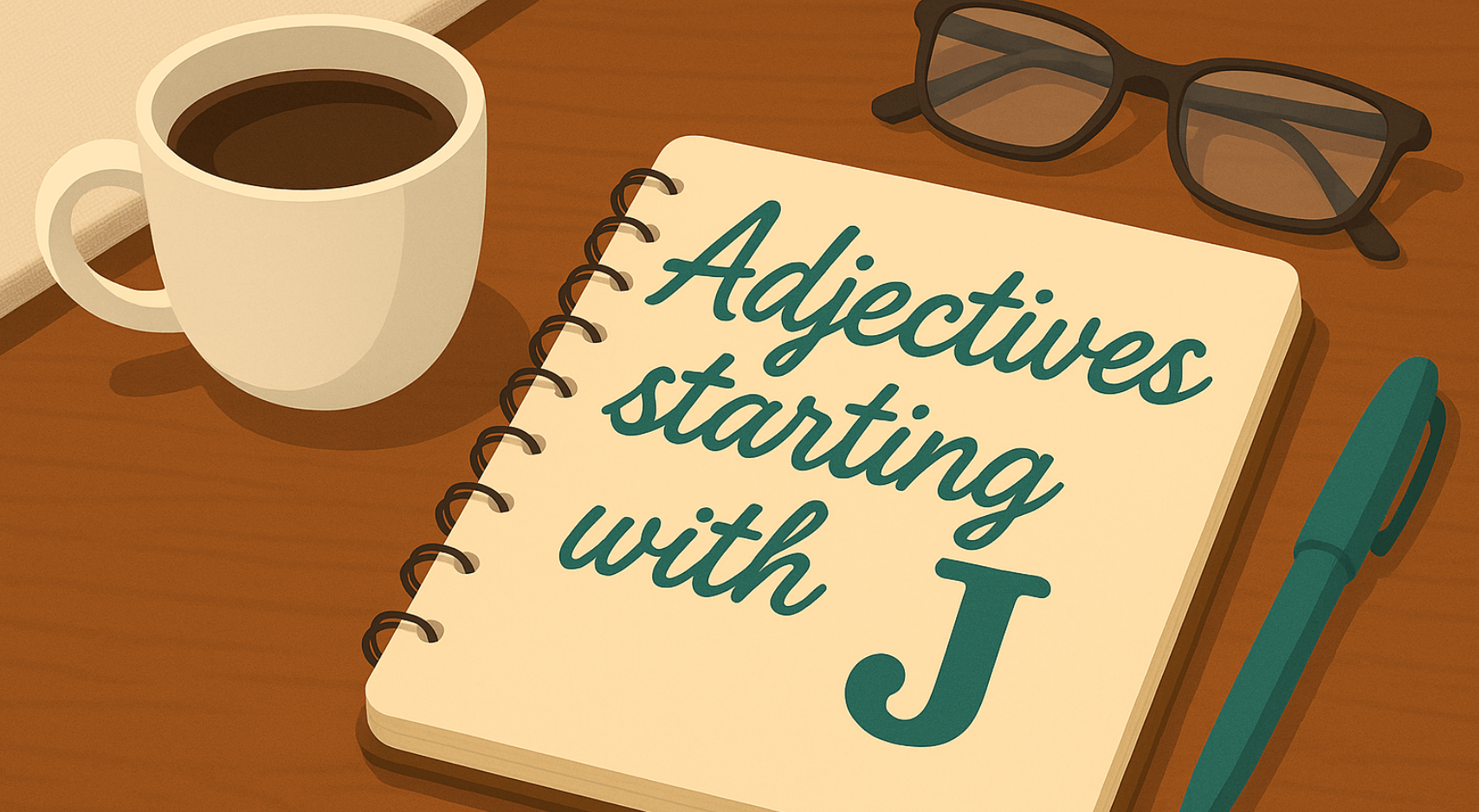Writing for children is a remarkable endeavor that combines the joy of storytelling with the responsibility of nurturing young minds. The importance of writing for children cannot be overstated; it is through stories that children learn about the world, develop their imaginations, and form lasting emotional connections. Creating stories that captivate and inspire young readers is both a privilege and a challenge for children’s book writers, who must consider specific factors such as age-appropriate content and tapping into childhood memories.
The unique challenges of writing children’s books lie in the need to craft engaging, age-appropriate content that resonates with young audiences. Unlike adult fiction, children’s books require a delicate balance of simplicity and depth, ensuring that the story is both accessible and meaningful. Authors must also consider the developmental stages of their readers, adapting their language, themes, and structure accordingly.
Despite these challenges, the rewards of writing for children are immense. There is nothing quite like the joy of seeing a child’s face light up as they delve into a story you created. The impact of a great children’s book can last a lifetime, fostering a love of reading and learning.
In this article, we will explore essential writing tips for children’s book authors. From understanding your audience and developing compelling stories to perfecting your writing style and navigating the publishing process, each section offers practical advice to help you succeed as a children’s book author.
Understanding Your Audience
Writing children’s books requires a deep understanding of your target audience, as identifying your target age range is crucial. It dictates the language, themes, and complexity of your story. The main categories include picture books, early readers, chapter books, middle grades, and young adults. Each category serves a specific age group with distinct developmental stages and interests.
Picture Books (Ages 0-5)
Picture books are designed for the youngest readers and often rely heavily on illustrations to tell the story, making them a crucial tool for engaging young readers. The text is minimal, using simple, repetitive language. Themes are straightforward, focusing on basic concepts like friendship, family, and daily routines. These books aim to engage and entertain while supporting early language development.
Early Readers (Ages 5-7)
Early readers are for children who are just starting to read independently. The text is still simple but slightly more complex than picture books, with short sentences and a limited vocabulary. Themes often revolve around relatable experiences and simple adventures. The goal is to build confidence and fluency in reading.
Chapter Books (Ages 7-9)
Chapter books introduce more text and fewer illustrations. The language is more advanced, with longer sentences and paragraphs. Themes can be more varied and include light fantasy, mystery, and realistic fiction. These books help transition children to more sustained reading, encouraging them to explore more complex narratives.
Middle Grade (Ages 9-12)
Middle-grade books cater to older children who can handle more complex plots and characters. The language is richer, and the themes can be more diverse and sophisticated, including personal growth, friendship, and adventure. These books often address real-life challenges and moral dilemmas, fostering critical thinking and empathy.
Young Adult (Ages 12+)
Young adult (YA) books are aimed at teenagers and often deal with mature themes and more intricate storylines. The language is similar to adult fiction, but the content focuses on issues relevant to adolescents, such as identity, relationships, and personal struggles. YA books encourage deeper emotional and intellectual engagement.
Understanding these differences is essential for creating stories that resonate with your intended audience. By considering the child’s developmental stage and interests, you can craft a narrative that not only captivates but also supports their growth and development as readers.
Developing a Compelling Story
At the heart of every successful children’s book is a strong and engaging storyline. A compelling story captivates young readers, drawing them into a world where their imaginations can run wild. In a market crowded with children’s books, a well-crafted story stands out and leaves a lasting impact on its readers.
Tips for Brainstorming and Planning Your Story Concept
- Know Your Audience: Understanding the age group and interests of your target audience is crucial. What captivates a toddler may bore a middle grader. Tailor your story concepts to align with the developmental stages and interests of your readers.
- Start with a Simple Idea: Great stories often begin with a simple, relatable idea. Think about everyday experiences, childhood adventures, or common challenges children face. From these seeds, grow a story that resonates with young readers.
- Create a Mind Map: Use mind mapping to explore different directions your story could take. Start with your central idea and branch out into characters, settings, and potential plot points. This visual brainstorming technique can help you see the big picture and develop a cohesive story.
- Use Prompts and Inspirations: Writing prompts can spark new ideas. Look at classic children’s stories for inspiration, but make sure to put your unique spin on your story. Everyday observations, dreams, and children’s conversations can also provide rich material for your narrative.
- Develop a Strong Theme: Decide on the core message or theme of your story. Whether it’s about friendship, bravery, or curiosity, having a clear theme will guide your plot and character development.
Crafting a Compelling Plot
An engaging plot is essential for writing a great children’s book as it not only entertains but also imparts valuable lessons and encourages a love of reading.
Your Publishing Journey Awaits – Start NowStart with a Hook: Begin your story with an intriguing opening that grabs attention. Whether it’s an unexpected event, a curious question, or a vivid description, your opening should entice readers to keep turning the pages.
Build Tension and Conflict: Introduce a problem or conflict early in the story. This conflict drives the narrative forward and keeps readers engaged. As the characters work to resolve the issue, ensure that the stakes are clear and meaningful.
Use Pacing to Your Advantage: Maintain a good balance between action and slower moments. Children have short attention spans, so keep the plot moving with regular peaks of excitement and moments of reflection.
Develop Relatable Characters: Create characters that children can relate to and root for. Give your protagonist strengths, flaws, and a clear goal. Supporting characters should also be well-developed and contribute to the story’s progression.
Craft a Satisfying Conclusion: End with a resolution that ties up loose ends and reinforces the story’s theme. A satisfying conclusion provides a sense of closure and accomplishment for the reader.
Balancing Entertainment with Educational Value
1. Embed Lessons Naturally: Rather than overtly teaching a lesson, weave educational elements into the storyline naturally. Children learn best when they’re engaged and having fun.
2. Use Subtext and Symbolism: Subtle messages can be conveyed through subtext and symbolism. This adds depth to your story and allows children to uncover layers of meaning as they grow.
3. Encourage Critical Thinking: Pose questions and present scenarios that encourage readers to think critically. This stimulates their imagination and problem-solving skills.
4. Reflect Diversity and Inclusion: Represent diverse characters and cultures in your story. This not only enriches the narrative but also teaches children about the world’s diversity and the value of inclusion.
5. Keep the Fun Factor: Ultimately, the story should be enjoyable. Use humor, adventure, and whimsy to keep children entertained. When learning is coupled with fun, it becomes more impactful and memorable.
By following these guidelines, you can develop a story that not only captivates young readers but also educates and inspires them. A compelling children’s book balances entertainment with valuable lessons, leaving a lasting impression on its audience.
Character Development
To write a children’s book, creating relatable and memorable characters is essential. They are the bridge through which young readers connect with the story. To create such characters, start by giving them traits and experiences that children can identify with. Think about the everyday lives of your readers—school, family, friendships, and play. Infuse your characters with emotions and challenges that reflect these experiences, making them feel real and relatable.
Importance of Character Growth and Development
Character growth and development are crucial elements in children’s books. As characters navigate their journeys, they should evolve, learning lessons and growing in meaningful ways. This development not only drives the narrative forward but also provides valuable life lessons for young readers. Watching a character overcome obstacles and change for the better can inspire children to face their own challenges with courage and resilience.
Techniques for Making Characters Appealing to Children:
1. Create Distinct Personalities: Give each character a unique personality that stands out. Whether it’s a quirky sense of humor, a particular talent, or an endearing flaw, distinctive traits make characters memorable.
2. Show, Don’t Tell: Illustrate characters’ qualities through their actions and dialogue rather than simply describing them. This makes the characters come alive and allows readers to form their own connections with them.
3. Use Age-Appropriate Behavior and Speech: Ensure your characters behave and speak in ways that are believable for their age. Authenticity in dialogue and actions helps readers relate to the characters more easily.
4. Include Emotional Depth: Even young readers appreciate emotional complexity. Show your characters experiencing a range of emotions—joy, sadness, fear, and excitement. This emotional depth makes characters more human and relatable.
5. Incorporate Humor: Children love humor, and funny characters or situations can make your story more engaging. Use humor that is appropriate for the age group and enhances the story without overshadowing it.
6. Create Strong Visual Descriptions: For picture books, vivid descriptions of characters help illustrators bring them to life visually. Even in text-heavy books, strong visual imagery can make characters more vivid in readers’ minds.
7. Develop Meaningful Relationships: Characters should interact in ways that reflect genuine relationships. Friendships, family dynamics, and mentor-mentee relationships can add layers of depth to your characters and enrich the narrative.
By focusing on these techniques, you can create characters that not only captivate young readers but also stay with them long after they have finished the book. Memorable characters are key to making a lasting impact and fostering a lifelong love of reading.
Writing Style and Language
When you write children’s books, clarity and simplicity are paramount. Young readers need to be able to follow the story without getting bogged down by complex language or convoluted sentences. Here are some tips to achieve this:
- Use Short Sentences: Break down complex ideas into short, manageable sentences. This makes the text easier to read and understand.
- Be Direct: Avoid unnecessary adjectives and adverbs. Use strong, direct verbs and nouns to convey your message.
- Stick to One Idea Per Sentence: Ensure each sentence focuses on a single idea. This helps maintain clarity and prevents confusion.
- Use Familiar Words: Choose words that are common in children’s vocabulary. If you introduce a new word, make sure its meaning is clear from the context.
Age-Appropriate Language and Vocabulary
Using age-appropriate language is crucial in children’s books. The vocabulary should match the readers’ cognitive and language development stages. Here’s how to achieve that:
1. Know Your Age Group: Different age groups have different language capabilities. For instance, picture books for toddlers should use simple, repetitive language, while middle-grade books can include more complex vocabulary and ideas.
2. Consider Developmental Stages: Understand the cognitive and emotional development of your target age group. For younger children, concrete concepts are easier to grasp than abstract ones.
3. Be Consistent: Maintain a consistent language style throughout the book. Sudden shifts in complexity can confuse young readers.
Using Dialogue Effectively
Dialogue is a powerful tool in children’s books for developing characters and advancing the plot. Here’s how to use it effectively:
1. Reflect Natural Speech: Write dialogue that sounds natural and age-appropriate. Listen to how children talk and mimic that in your writing.
2. Show Character Traits: Use dialogue to reveal character traits and emotions. For example, a shy character might speak in short, hesitant sentences.
3. Advance the Plot: Ensure that each line of dialogue serves a purpose. It should either reveal something about a character, advance the plot, or ideally both.
4. Break Up Text: Dialogue breaks up long passages of text, making the book more engaging and easier to read.
Incorporating Humor, Rhythm, and Repetition
Humor, rhythm, and repetition are essential elements that make children’s books engaging and enjoyable:
1. Humor: Use age-appropriate humor to keep readers entertained. This can include wordplay, funny situations, or humorous characters. Be mindful of the type of humor that resonates with your target age group.
2. Rhythm: Pay attention to the flow and rhythm of your sentences. Rhythmic language can be particularly engaging for young children and can enhance the storytelling experience. Read your sentences aloud to ensure they have a pleasant cadence.
3. Repetition: Repetition is a powerful tool in children’s literature. It reinforces learning and helps children anticipate what comes next. Repeated phrases or structures can make the story more memorable and enjoyable.
By focusing on a clear and simple writing style, age-appropriate language, effective dialogue, and incorporating humor, rhythm, and repetition, you can create a captivating narrative that resonates with young readers. This approach not only makes the book enjoyable but also supports the development of essential reading skills.
Story Structure
A well-structured story is essential for keeping young readers engaged, especially when writing a first children’s book. New authors often face challenges in creating a clear and logical progression that is easy for children to follow. Children’s books generally follow a simple three-part structure: beginning, middle, and end.
Beginning: The beginning sets the stage for the story. It introduces the main characters, establishes the setting, and presents the central conflict or problem. The opening should be engaging and provide enough information to hook the reader.
Middle: The middle is where the bulk of the story unfolds. This section develops the plot, builds tension, and deepens character relationships. The conflict intensifies, leading to a climax where the protagonist faces their biggest challenge.
End: The end resolves the conflict and ties up loose ends. It provides a satisfying conclusion that reinforces the story’s theme and leaves the reader with a sense of closure.
Importance of a Strong Opening to Grab Attention
A strong opening is crucial for capturing a child’s attention from the outset. Young readers decide quickly whether a book interests them, so the first few pages need to be compelling.
1. Start with Action: Begin with an exciting event or intriguing situation that immediately engages the reader.
2. Introduce Characters: Quickly introduce the main characters and give a hint of their personalities and goals.
3. Set the Scene: Establish the setting to give readers a sense of place and context.
4. Pose a Question: Present a problem or mystery that piques curiosity and encourages readers to keep turning the pages.
Building Tension and Climax
Building tension keeps readers invested in the story. Gradually increasing the stakes and complications makes the eventual climax more impactful.
1. Introduce Challenges: Present obstacles and challenges that the protagonist must overcome. These should escalate in difficulty, keeping readers on the edge of their seats.
2. Develop Relationships: Deepen the relationships between characters. Their interactions and conflicts can add to the overall tension.
3. Foreshadowing: Use foreshadowing to hint at future events, creating anticipation and suspense.
4. Climax: The climax is the peak of the story’s tension. It’s the moment when the protagonist confronts the main conflict head-on. This should be the most exciting and emotionally charged part of the book.
Crafting a Satisfying Conclusion
A satisfying conclusion provides closure and reinforces the story’s themes and messages. It’s important that the resolution feels earned and leaves the reader feeling content.
1. Resolve the Conflict: Ensure that the central conflict is resolved in a way that makes sense and feels satisfying.
2. Show Character Growth: Highlight how the characters have changed and grown as a result of their experiences.
3. Tie-Up Loose Ends: Address any remaining subplots or questions to avoid leaving the reader confused.
4. End with a Positive Note: While not all stories need a “happily ever after,” ending on a hopeful or positive note can leave a lasting impression on young readers.
By adhering to this basic structure and focusing on a strong opening, building tension, and crafting a satisfying conclusion, you can create a compelling and memorable story that resonates with children.
Illustrations and Visual Elements
Illustrations play a crucial role in kids’ books, often being as important as the text itself. They help bring the story to life, making it more engaging and accessible for young readers. Visuals can aid in comprehension, especially for pre-readers or early readers who rely on pictures to understand the narrative. Illustrations also add an emotional layer to the story, conveying feelings and actions that words alone might not fully capture.
Your Publishing Journey Awaits – Start NowTips for Collaborating with Illustrators
1. Choose the Right Illustrator:
Select an illustrator whose style complements your story. Review their portfolio to ensure their previous work aligns with your vision.
2. Communicate Clearly:
Provide a detailed manuscript and clear descriptions of how you envision each scene. Share insights into the characters’ personalities, settings, and any specific elements you want included.
3. Be Open to Ideas:
Illustrators bring their own creativity to the project. Be open to their suggestions and trust their expertise in visual storytelling.
4. Establish a Workflow:
Agree on a timeline and milestones for reviewing sketches, drafts, and final illustrations. Regular communication helps ensure the project stays on track.
Balancing Text and Illustrations
Balancing text and illustrations is vital for a cohesive and engaging book. Here’s how to achieve that balance:
1. Keep Text Concise:
In picture books, keep the text minimal and allow the illustrations to tell part of the story. This makes the book more engaging and visually appealing.
2. Complementary Layout:
Work with the illustrator to ensure that the text and images complement each other. The layout should guide the reader’s eye smoothly from text to illustration.
3. Avoid Redundancy:
Ensure that the text and illustrations each add unique value to the story. Avoid repeating the same information in both mediums.
Importance of Colorful and Engaging Visuals for Younger Readers
For younger readers, colorful and engaging visuals are essential. They not only attract and hold a child’s attention but also stimulate imagination and creativity.
1. Bright and Bold Colors:
Use bright and bold colors to captivate young readers. These are more likely to grab their attention and keep them interested in the story.
2. Expressive Characters:
Ensure characters are expressive and visually appealing. Children connect emotionally with characters through their facial expressions and body language.
3. Detail and Texture:
Incorporate detailed and textured illustrations to create a rich visual experience. These elements can encourage children to explore the pictures closely, noticing new details with each reading.
4. Interactive Elements:
Consider including interactive elements like flaps, textures, or even augmented reality features to make the book more engaging.
By focusing on these aspects, you can create a visually appealing and effective children’s book that not only tells a story through words but also through vivid, captivating illustrations. This visual storytelling is crucial in capturing and maintaining the attention of young readers.
Editing and Revising
Editing and revising are critical steps in the process of writing a children’s book. A well-edited manuscript ensures clarity, consistency, and quality, making your story more engaging and impactful. Revising allows you to refine your ideas, improve the flow of your narrative, and enhance character development. Thorough editing helps eliminate errors, strengthen your language, and ensure that your book meets the expectations of your target audience.
Tips for Self-Editing and Seeking Feedback
1. Take a Break:
After completing your first draft, take a break before revising. This helps you return to your manuscript with fresh eyes, making it easier to spot errors and areas for improvement.
2. Read Aloud:
Reading your manuscript aloud helps you catch awkward phrasing, repetitive language, and pacing issues. It also allows you to hear how your dialogue sounds and whether it feels natural.
3. Focus on One Aspect at a Time:
Tackle different elements of your story in separate passes. Start with big-picture issues like plot and character development, then move on to sentence structure, word choice, and grammar.
4. Seek Feedback:
Share your manuscript with trusted friends, family, or writing groups. Feedback from others can provide new perspectives and highlight areas you might have missed.
Working with Professional Editors and Beta Readers
1. Hire a Professional Editor:
A professional editor brings expertise and an objective viewpoint to your manuscript. They can help with developmental editing (big-picture issues), copyediting (language and style), and proofreading (grammar and typos).
2. Use Beta Readers:
Beta readers are individuals who read your manuscript before it’s published, offering feedback from a reader’s perspective. Choose beta readers from your target audience’s age group, if possible, to ensure your story resonates with them.
3. Implement Feedback Thoughtfully:
Not all feedback will be useful or applicable. Consider each suggestion carefully and make changes that align with your vision for the story.
Common Mistakes to Avoid
1. Overcomplicating the Story:
Children’s books should be straightforward and easy to follow. Avoid overly complex plots and subplots that can confuse young readers.
2. Ignoring Pacing:
Ensure your story has a good pace, with a balance of action and quieter moments. Avoid dragging out scenes or rushing through important plot points.
3. Underdeveloped Characters:
Make sure your characters are well-rounded and relatable. Avoid one-dimensional characters by giving them distinct personalities, motivations, and growth.
4. Skipping the Proofreading:
Even minor errors can distract readers and detract from the professionalism of your book. Thoroughly proofread your manuscript or hire a professional proofreader.
5. Overloading with Illustrations or Text:
Balance is key in children’s books. Ensure that the text and illustrations complement each other without overwhelming the reader.
By prioritizing thorough editing and revision, you can polish your manuscript, making it the best it can be. This attention to detail ensures your story is engaging, well-structured, and free of errors, increasing its chances of success with young readers.
Publishing Your Children’s Book
When it comes to publishing your children’s book, you have two primary routes: traditional publishing and self-publishing. Each path has its own set of advantages and challenges.
Traditional Publishing: Involves submitting your manuscript to established publishing houses, which take on the responsibility of editing, designing, printing, and distributing your book. If accepted, you typically receive an advance and royalties based on sales.
Self-Publishing: This allows you to publish your book independently. You handle or hire out the tasks of editing, designing, printing, and marketing your book. This route offers more creative control but requires a significant investment of time and money.
Steps to Submit to Traditional Publishers
1. Research Publishers: Identify publishers that specialize in children’s books. Look for those who have published books similar to yours in theme, style, and age group.
2. Prepare a Query Letter: A query letter is a one-page pitch to the publisher or literary agent. It should include a brief synopsis of your book, your target audience, and a short author bio.
3. Submit a Book Proposal: Some publishers require a book proposal that includes a detailed synopsis, chapter outlines, and sample chapters. Follow the specific submission guidelines of each publisher.
4. Follow Submission Guidelines: Adhere strictly to each publisher’s submission requirements. This may include specific formatting, mailing instructions, or digital submission protocols.
5. Wait for a Response: Response times can vary widely. Some publishers may respond within weeks, while others can take several months.
Pros and Cons of Self-Publishing
Pros:
- Creative Control: You retain full control over the content, design, and marketing of your book.
- Faster Publication: Self-publishing can be quicker, allowing you to bring your book to market faster.
- Higher Royalties: You keep a larger percentage of the sales revenue, as there are no traditional publisher fees.
Cons:
- Upfront Costs: You are responsible for all costs, including editing, design, printing, and marketing.
- Marketing Challenges: Without the support of a publisher, you must handle all promotional activities yourself.
- Distribution Limitations: Getting your book into bookstores and libraries can be more challenging.
Finding a Literary Agent and Navigating Publishing Contracts
Finding a Literary Agent:
1. Research Agents: Look for agents who represent children’s book authors. Check their submission guidelines and track record in the industry.
2. Prepare a Query Package: This typically includes a query letter, synopsis, and sample chapters. Tailor your submission to each agent’s requirements.
3. Submit and Follow Up: Submit your query package and follow up if you don’t hear back within the agent’s specified timeframe. Be patient and persistent.
Navigating Publishing Contracts:
1. Understand the Terms: Publishing contracts can be complex. Key terms to understand include advance payments, royalty rates, rights granted, and obligations for both parties.
2. Negotiate: Don’t be afraid to negotiate the terms of your contract. Common areas for negotiation include royalty percentages, rights to future works, and the length of the contract.
3. Seek Legal Advice: Consider consulting a literary attorney or an experienced agent to review your contract. They can help ensure that the terms are fair and in your best interest.
4. Rights and Responsibilities: Ensure you understand which rights you are granting to the publisher (e.g., print, digital, international) and what responsibilities you retain, such as marketing efforts.
5. Termination Clauses: Pay attention to the conditions under which either party can terminate the contract. Knowing your exit options is crucial for protecting your interests.
Choosing between traditional publishing and self-publishing depends on your goals, resources, and preferences. Traditional publishing offers validation and support, while self-publishing provides creative freedom and higher potential profits. Whichever route you choose, thorough research, careful preparation, and understanding of the nuances of the publishing process will greatly increase your chances of success.
Marketing and Promoting Your Book
Marketing and promoting your children’s book effectively is crucial to reaching your target audience and ensuring its success. Here are some strategies to consider:
1. Develop a Marketing Plan: Outline your goals, target audience, budget, and timeline. A clear plan helps keep your promotional efforts organized and focused.
2. Create a Compelling Website: A professional website serves as your online hub. Include information about your book, author bio, contact details, and a blog for updates and engaging content.
3. Leverage Online Retailers: Optimize your book’s listing on online retailers like Amazon. Use keywords effectively in the description, encourage reviews, and participate in promotional programs.
Utilizing Social Media and Online Platforms
1. Social Media Presence: Use platforms like Facebook, Instagram, Twitter, and Pinterest to connect with your audience. Share engaging content such as behind-the-scenes looks, illustrations, character profiles, and updates about your book.
Your Publishing Journey Awaits – Start Now2. Book Trailers: Create a short, engaging video trailer for your book. Share it on YouTube, social media, and your website to attract attention and generate excitement.
3. Online Communities: Participate in online forums and communities dedicated to children’s literature. Engage with potential readers, parents, teachers, and other authors.
4. Email Marketing: Build an email list through your website and social media. Send newsletters with updates, exclusive content, and special offers to keep your audience engaged.
Importance of Book Readings, Signings, and School Visits
1. Book Readings: Organize readings at local bookstores, libraries, and community centers. These events allow you to connect directly with your audience and create memorable experiences for young readers.
2. Book Signings: Host book signings to meet your readers, personalize their copies, and encourage word-of-mouth promotion.
3. School Visits: Arrange visits to schools to read your book and discuss the writing process. These visits can inspire children and create a personal connection to your book.
Building a Network and Engaging with Your Audience
1. Networking with Authors: Join writers’ groups, attend conferences, and participate in workshops. Networking with other authors can provide valuable support, advice, and promotional opportunities.
2. Engaging Content: Regularly update your blog and social media with engaging content. Share stories, writing tips, and personal anecdotes to build a loyal following.
3. Interactive Activities: Organize contests, quizzes, and activities related to your book. Encourage readers to share their experiences and artwork inspired by your book.
4. Collaborate with Influencers: Partner with bloggers, book reviewers, and social media influencers who focus on children’s books. Their endorsements can significantly boost your book’s visibility.
By employing these strategies, you can effectively market and promote your children’s book, reaching a wider audience and fostering a community of engaged readers. Consistent effort and creativity in your promotional activities will help ensure your book’s success.
Conclusion: Inspiring Success in Children’s Book Writing
In this article, we’ve covered essential tips for writing and publishing a successful children’s book. From understanding your target audience and developing compelling stories to character development, writing style, and marketing strategies, each step plays a crucial role. Aspiring children’s book authors should embrace the joy and challenges of writing for young readers, continually refining their craft. Remember to stay passionate, patient, and persistent. With creativity, careful planning, and dedication, you can create captivating stories that inspire and delight children for generations to come. Happy writing!
Have you completed your manuscript and are ready to share it with the world? Spines stands as your gateway to the self-publishing realm, embodying the future of publishing. Our AI-powered platform is designed to revolutionize your publishing journey, offering a suite of comprehensive services. These include detailed editing and proofreading, captivating cover creation, seamless distribution, and strategic marketing across various channels and platforms. With Spines, your book is not only set to transcend the ordinary but also to make a significant impact in the new era of publishing. Sign up for free to start your self-publishing journey.








